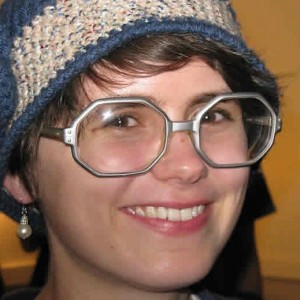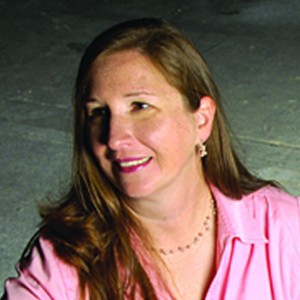Recognizing the Wrong Path
It was late and getting later on a Sunday night, and I had been on the verge of tears all day. I knew I had to say something. I had already waited much too long, and now it was the day before the deadline. So tense I was practically nauseous, I picked up the phone to call Allison, my writing partner. “I think we need to change topics,” I said, trying and failing to sound relaxed.
“I’m so glad to hear you say that,” Allison replied. “So do I.”
It had been about six months since Allison and I had been paired up at the first Think Write Publish workshop. I was the writer, she was the scholar—a history professor who had studied engineering. We were among the only people in the program interested in the physical sciences, drawn to the challenge of telling compelling stories about subjects that can seem arcane and inaccessible. We hit it off right away.
We also had no idea of the giant rabbit hole we were scurrying down. Allison had some experience writing long—as a tenure-track professor, she had a whole PhD dissertation under her belt. But although I had always been a good writer, I didn’t have much experience with journalism, let alone narrative feature writing. I had wanted to be a science writer since the beginning of college, when I interned in the communications office of a physics lab and loved it. I wasn’t in much of a hurry, though. At the time of the first TWP workshop, I had been out of college for four years and had only recently started my first journalism internship, at Wired magazine. The longest piece I had ever written was around 2,000 words.
So when Allison and I sat down to brainstorm ideas for the long creative nonfiction piece we would spend the next year and a half working on, we made one of the most common mistakes in narrative writing: we thought about topics, not stories. We figured that if the topic was interesting enough, the rest of the story—characters, stakes, a clear beginning, middle, and end—would fall into place. This isn’t true. But it’s also a nearly unavoidable delusion, one that many, many writers have fallen prey to at some point.
Back at the first workshop, our brainstorming wasn’t going anywhere. So eventually I floated my favorite topic at the time: the life and death of the Superconducting Super Collider (SSC), a particle accelerator that was partially built and then abandoned in the plains of East Texas in the mid-1990s. We were coming up on the 20th anniversary of the federal government’s cancellation of the project, so it seemed like a good time for a retrospective to consider the ramifications of a policy decision that had rocked American particle physics. Plus CERN, the physics lab in Geneva, Switzerland, had just announced the discovery of the Higgs boson at its Large Hadron Collider (LHC). Because the Higgs was thought to give mass to the rest of the elementary particles, it was an absolutely vital piece of the model physicists use to describe the universe. But until 2012, no one had ever observed a Higgs. The SSC had been designed to churn them out by the billions, with energy left over for other mysteries that the LHC might not be powerful enough to tackle. As the discovery of the Higgs was triumphantly announced by every major news outlet, it seemed like all this history was getting left out of the story.
My interest wasn’t purely theoretical. I had visited the SSC site during a cross-country road trip a few years prior and become obsessed. The abandoned office buildings now inhabited by wasps, the flooded accelerator tunnel just a few feet below the ground, the ghost-like footprints of other intrepid, scientifically minded trespassers—the setting seemed perfect for a story of loss. I told Allison all about how the site seemed tragically representative of the ways big physical science projects had declined in the U.S. after the end of the Cold War, a monument to the moment when a country gave up on its dreams.
By that point I had been talking about the SSC for years. I was good at selling it. I even thought I might to write a book about why the project had failed and what it meant for the future of particle physics. Allison caught my enthusiasm and started her own research on the SSC. She remembered that pieces of the SSC had been on display at the Smithsonian National Museum of American History in the Science in American Life exhibit, one of the most widely acclaimed and criticized exhibits of the 1990s. She wondered what the museum’s archives would reveal about the cancellation.
I should have stopped her right there. Because if I’m really honest with myself, I knew it was never going to work as the kind of piece we were supposed to be writing for TWP. There was some narrative momentum built into the saga of how the project was green-lit by the federal government and then, a few years later, defunded. But I had been poking around the history of the SSC for several years at that point, and I had yet to find a single character interesting enough to carry a story. And the more I thought about the death of the SSC, the lower the stakes seemed. Who cared what had happened to a specialty science project 20 years ago? Maybe it wasn’t that physics history was being forgotten. Maybe it was just that the field had moved on, and it was time for me to do the same.
Instead, I doubled down. For the next months, I forced myself to suffer through interview after fruitless interview, hour after hour of trying to write and coming up with nothing, weekend after weekend of feeling the guilt, dread, and shame pile up to insurmountable levels. At a certain point—which, not coincidentally, ended up being the night before our deadline—there was nothing left to do but confess my troubles and look for a new story to tell.
Allison and I felt terrible about changing our topic so late in the game. I was as nervous and tense as I’d ever been heading into our second TWP workshop. Changing our topic felt like failing. But as we settled on a new story—a chronicle of Allison’s time exploring and researching a curator-less collection at the Smithsonian—it was immediately clear we’d done the right thing. The new story had an obvious main character: Allison herself, who could talk first hand about the struggles to keep an orphaned collection alive and growing. There was drama, as she attempted to arrange a meeting with a senator to make the case for the engineering collection’s importance. And there were stakes. Our country’s technological present was going uncurated at our national history museum. If no one knew about the problem, it would never be fixed.
At our second workshop, the words poured out. After two days, we had written thousands of words and had a clear outline for the rest. Six weeks later, we filed a solid draft. Even though it wasn’t published for nearly a year, the piece continues to feel present and urgent. It’s inspired people with power to help the Smithsonian’s orphaned collections. We couldn’t have asked for a better response.
I know that when it comes to a narrative feature, the last thing you need is a sweeping topic full of grand ideas. You need to start with the characters, the narrative arc, and the stakes. Those aren’t blanks to be filled in later. Those are the minimum you need to get started. They are also precisely what Allison and I were missing when it came to the SSC, and what we had in abundance when it came to the Smithsonian.
If there’s one thing I learned from TWP, it’s that stories will tell you how they need to be written. Different kinds of pieces have different ingredients. If you don’t have the ingredients for a creative nonfiction feature, you won’t be able to write one, no matter how many agonizing hours you spend in front of your computer. But you might have the ingredients for another kind of piece. Just because something isn’t meant to written as a long narrative doesn’t mean it’s not worth writing. Sometimes an op-ed, a blog post, a slideshow, or a chart is the best way to tell a story.
In the end, Allison salvaged a small part of the SSC research and wrote a blog post on the American History Museum’s website on October 21, 2013, the 20th anniversary of the cancellation. She didn’t write about the abandoned tunnel in Texas, but rather about the grass roots organizations that opposed the SSC’s construction. It focused on what the museum collected from the failed project. She started the piece with the rhetorical question of “How do you write a history of something that didn’t happen?” The reality, we learned, is that you can’t—at least not as a creative nonfiction narrative.
Two and a half years after that first TWP workshop, I’m putting the lessons we learned the hard way into practice as the Latin America correspondent for Science magazine. As a reporter, I’ve started going on quests for good characters who have stories with built-in conflicts and narrative arcs. They are really hard to find. And, to be honest, I’m a little worried I’ll talk myself out of trying to tell their stories even when I do manage to find them, because I’m scared of getting sucked into another dead-end topic. At this point in my career, I’m trying to find the balance between trying to write about every topic I find interesting and giving up on potentially rich stories before I even get started, out of fear they won’t pan out.
I trust that eventually I’ll find that balance. I also trust that our SSC attempt won’t be the last time I fall in love with a story only to realize I have to give it up, or approach it in a different way. Not all stories can or need to be told in narrative form, and accepting that is the first step in identifying the stories that do. Experimenting with a topic and realizing it won’t work isn’t the end of the creative process. It’s just the beginning.


